Billie Joe Armstrong's Guitars
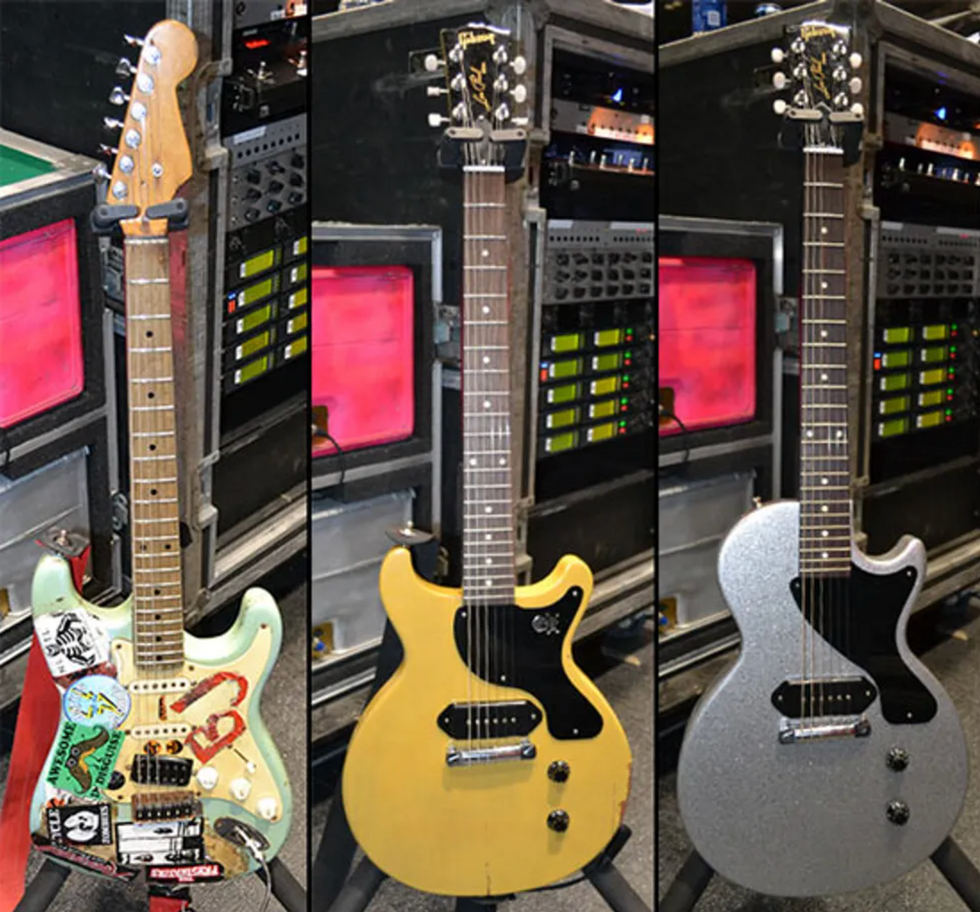
Armstrong brings a mixed bag of new and old guitars on tour with him. The mass majority of them are Gibson Les Paul Jr models, but the most iconic guitar dating back to the early-90s is the super-strat coined Blue. The stickered axe is a Fernandes Stratocaster copy that he got for his birthday when he was 11. Among the things BJA has changed on this axe was the bridge pickup, which he originally swapped out the stock single-coil for a Bill Lawrence humbucker, but eventually deciding in the late '90s to go with a Seymour Duncan SH-4 JB that is set at an EVH-inspired angle. In addition, the guitar's pickup selector is locked in the bridge position and the middle and neck pickups are disconnected. Armstrong uses Blue on primarily Green Day's earlier stuff like "Basket Case," "Longview," "Brain Stew," and "Hitching' a Ride," so the guitar is tuned to Eb and is strung with Ernie Ball Slinky .010--.046 strings (the rest of Armstrong's guitars are tuned to E standard with .010s, too). Other go-to guitars Armstrong uses during live performances includes the repaired TV-yellow Gibson Les Paul Jr doublecut that he busted during the Las Vegas I Heart Radio festival, and a silver-sparkle signature Gibson Les Paul Jr singlecut with a Seymour Duncan P-90 Antiquity in the bridge.
From his collection of vintage Jrs, BJA's brought a doublecut '59 TV yellow model and a '55 black singlecut both outfitted with a single P-90 in the bridge. New acquisitions to Armstrong's touring arsenal are a Rickenbacker 330, modified with only one volume control, and a late '60s Martin GT-70 has a bolt-on neck and original DeArmond pickups.
Billie Joe Armstrong's Amps and Effects
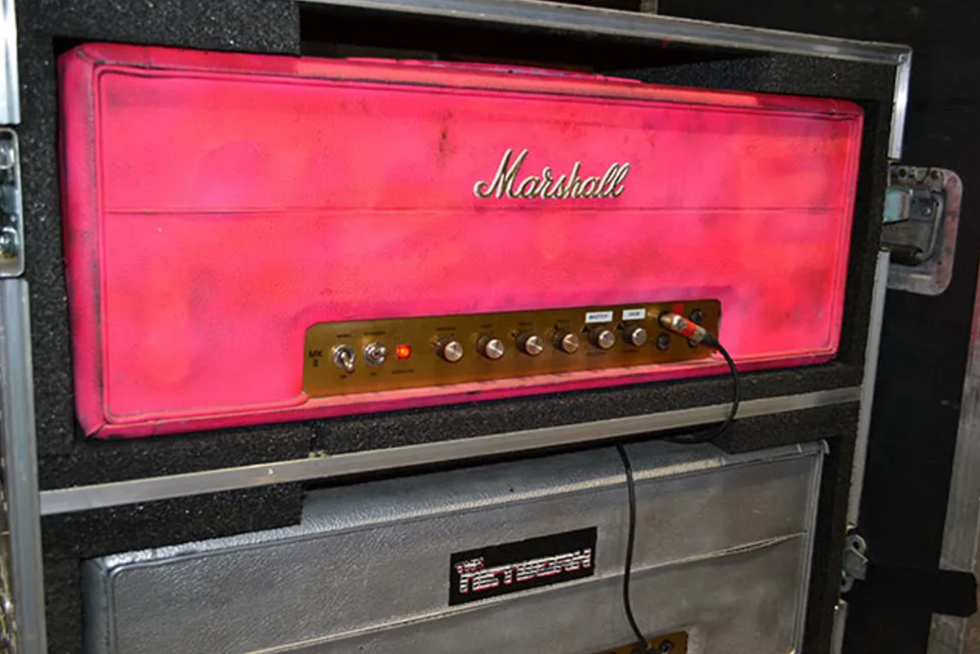
His two Marshall 100-watt 1959 SLP reissue heads were modified by Martin Golub at L.A. Sound Design. The top head (Pete) has a crunch mod (a.ka. “Dookie” mod or Bradshaw gain mod) and Meat (lower head) has Golub’s SE Lead mod, which adds another preamp tube for more gain. The two heads have been Armstrong's got-to amps since even before their iconic 'mud set' at Woodstock '94 performance. For his clean tone, BJA uses a rackmount Custom Audio Electronics 3+ SE guitar tube preamp. Both heads and the CAE 3+ SE run through two Marshall 1960B cabinets that are equipped with Celestion Vintage 30s.
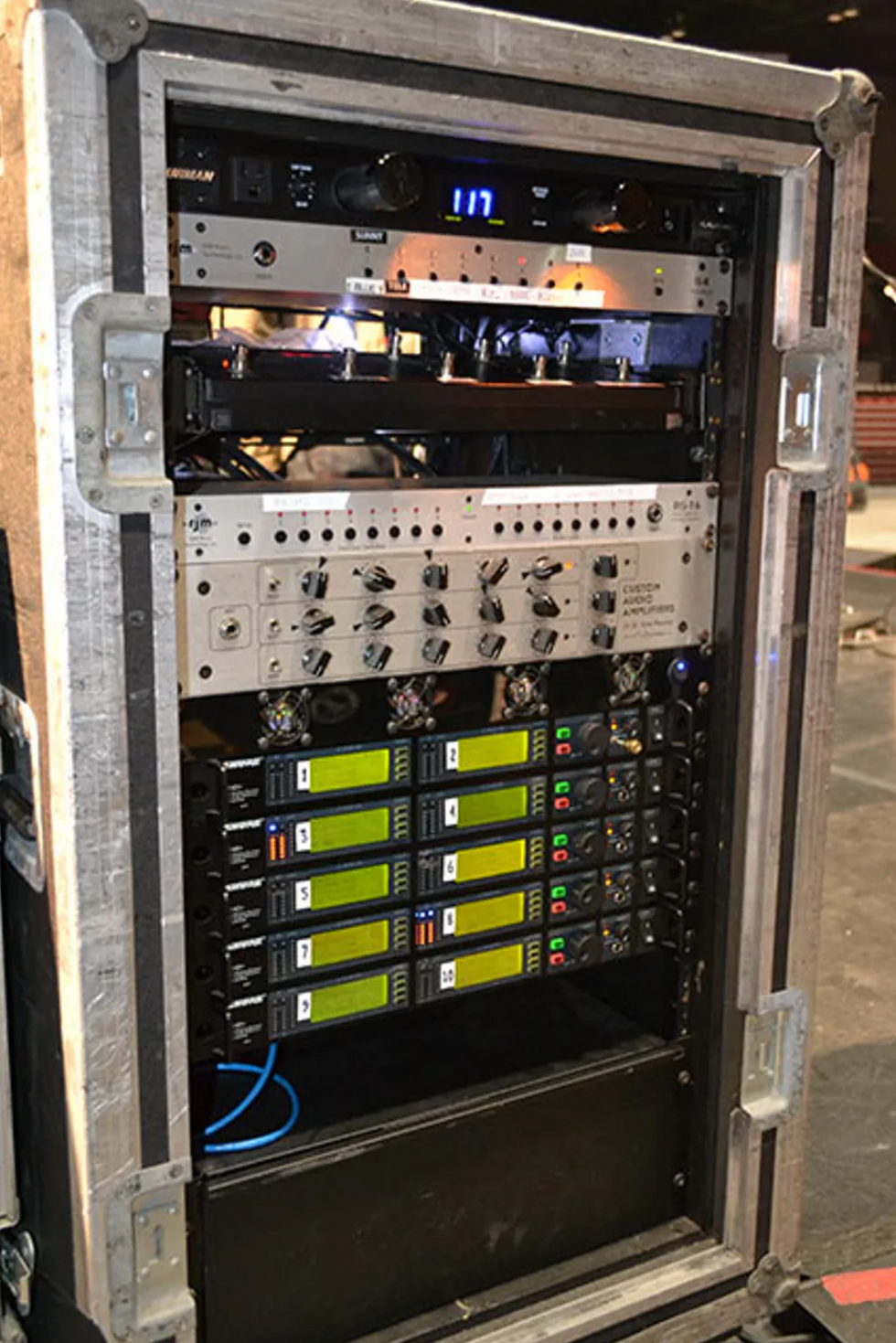
The Shure R4D+ wireless units go into a RJM iS-8 allowing Buscher to switch between eight guitar inputs, which then splits off into either the CAE 3+ SE preamp or Marshall heads and the RJM RG-16 switcher and MasterMind MIDI controller that engage the four main presets that Billie uses. The controller’s presets are Clean and Mid (both settings bypass the Marshalls’ preamps in favor of a Custom Audio Electronics 3+ SE guitar tube preamp), Big (both Marshalls without the CAE preamp), and Big Effect (which kicks in a Boss BD-2 Blues Driver pedal for solos). BJA does have a MXR Carbon Copy Delay that is used for "Kill the DJ."
Jason White's Guitars
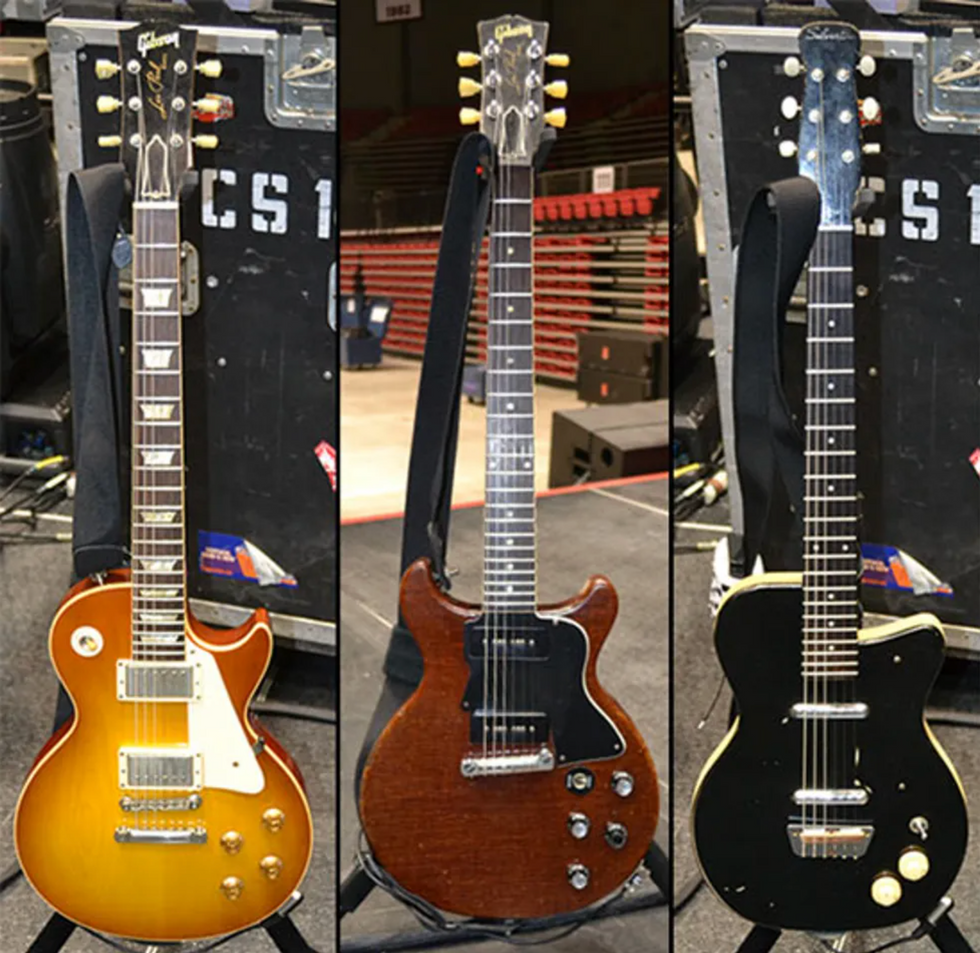
White's main guitar is a '50s Gibson Les Paul Jr doublecut with two P-90s (and a Gibson Les Paul goldtop with P-90s as its backup) that White uses on rhythm duties, while his Gibson Les Paul is used on any of the band's newer where White takes lead guitar duty. For thin-and-jangly tones, White leans on his Silvertone for "Kill the DJ" and "Stray Heart." For acoustic tones, he goes with one of his two Gibson ES-335s that are outfitted with a Fishman piezo pickup through a Fishman Aura preamp set to dreadnaught. For '90s material, White counts on his black Gibson Les Paul that is tuned to Eb.
Jason White's Amps and Effects
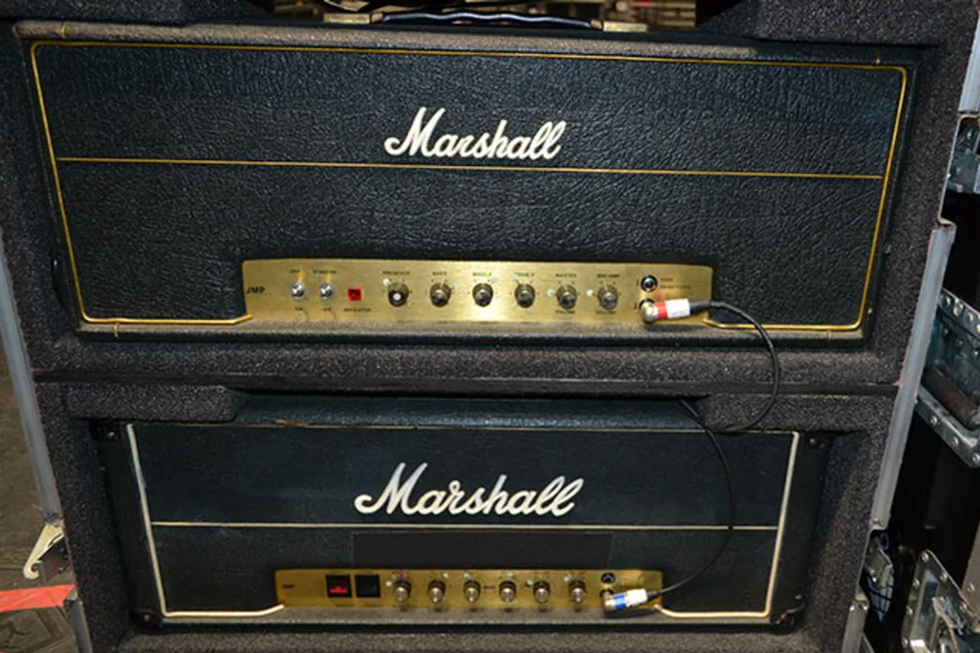
White uses the same 100-watt Marshall heads with the same Dookie mod (top) and SE Lead mod (bottom), and like Billie's two-headed monster, White's amps are always used in conjunction with each other for a full, rich, rounder sound with sustain and cut. Whereas BJA's Marshalls are set to noon, White scoops mids on the SE Lead head. Also, White's clean tones are coming from the CAE 3+ SE tube preamp. For White's Big Effect patch, he uses a Chandler Limited Little Devil Colored Boost. Also in his rack is a Dunlop Crybaby Rack Module (with remote foot controller onstage) and a rackmount Line 6 Echo Pro (set to a basic eighth note triplet), and both are used on White's solo for "Boulevard of Broken Dreams." Other pedals in his rack (but not used) are a MXR Phase 90 and a Boss PS-6 Harmonist. The Shure R4D+ wireless units go into a RJM iS-8 White's tech Chris Schleyer to switch between eight guitar inputs, which then splits off into either the CAE 3+ SE preamp or Marshall heads and the RJM RG-16 switcher and MasterMind MIDI controller that engage the four main presets that Jason uses.
[Updated 12/30/21]




![Rig Rundown: Russian Circles’ Mike Sullivan [2025]](https://www.premierguitar.com/media-library/youtube.jpg?id=62303631&width=1245&height=700&quality=70&coordinates=0%2C0%2C0%2C0)




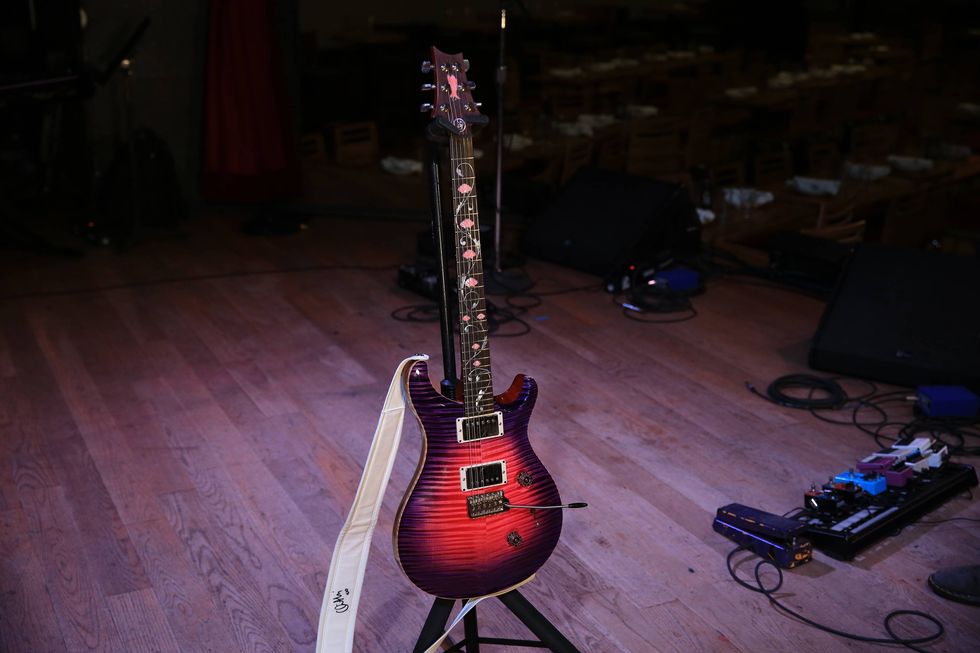
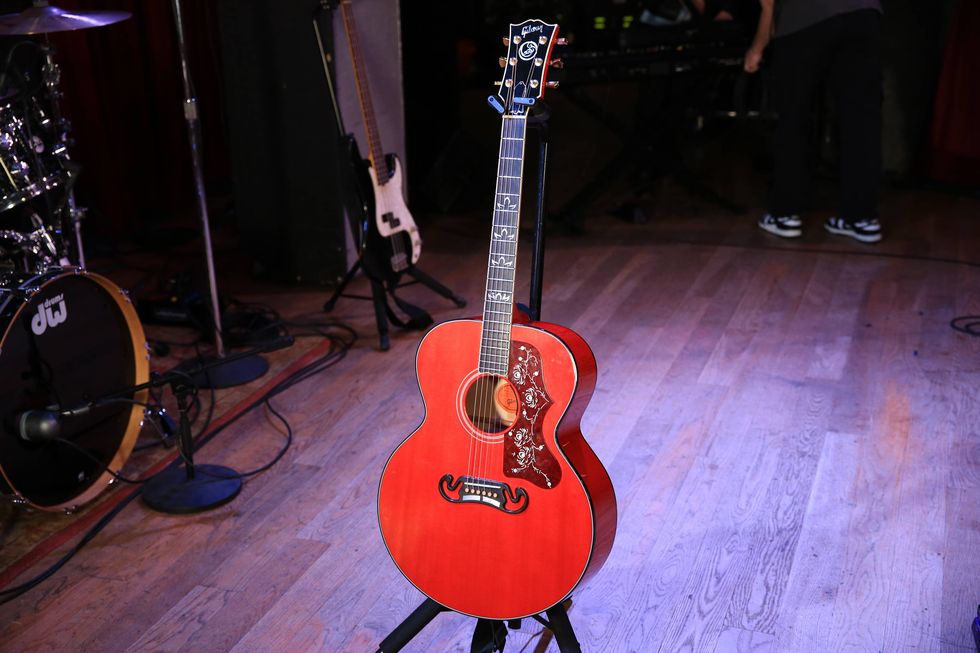
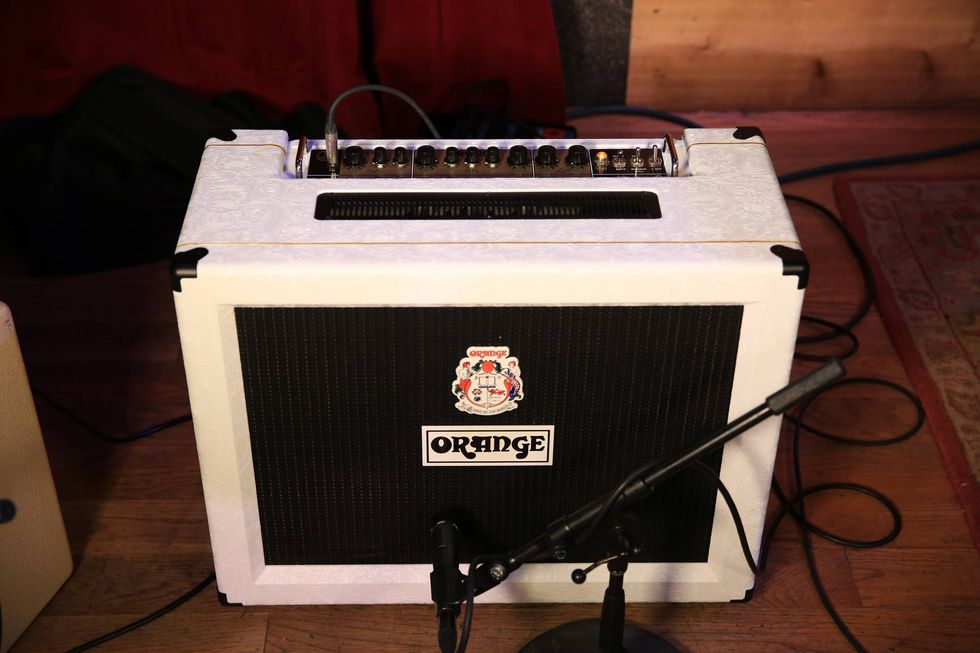
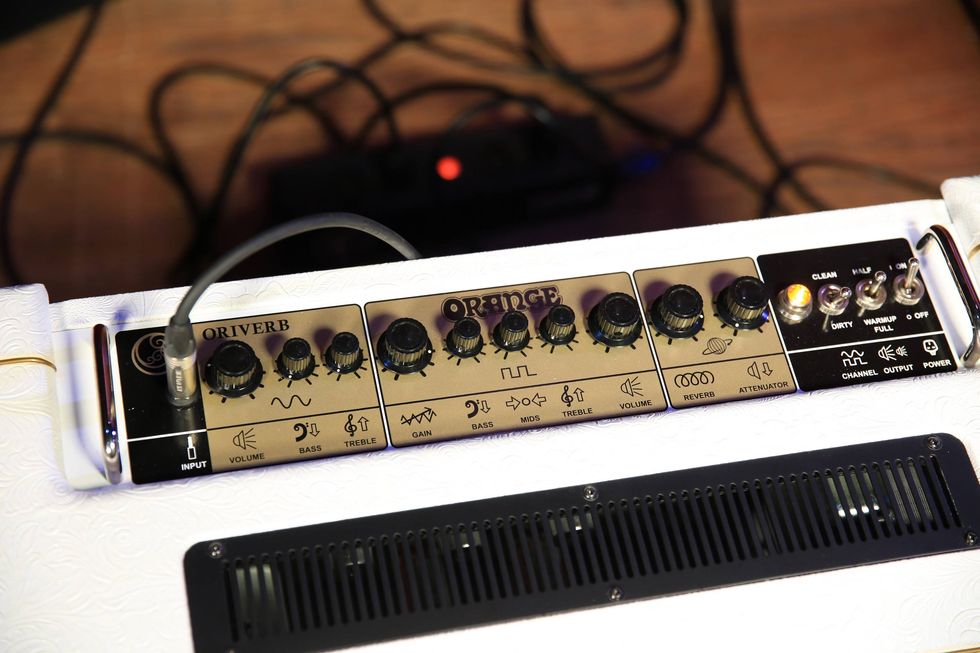
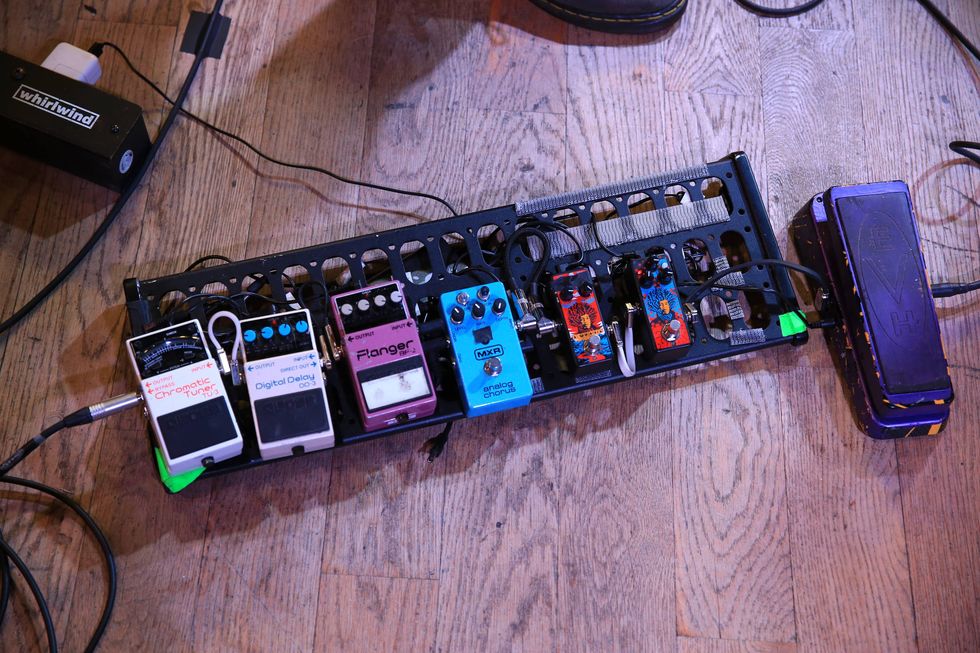







![Rig Rundown: AFI [2025]](https://www.premierguitar.com/media-library/youtube.jpg?id=62064741&width=1245&height=700&quality=70&coordinates=0%2C0%2C0%2C0)












 Shop Scott's Rig
Shop Scott's Rig







 Zach loves his Sovtek Mig 60 head, which he plays through a cab he built himself at a pipe-organ shop in Denver. Every glue joint is lined with thin leather for maximum air tightness, and it’s stocked with Celestion G12M Greenback speakers.
Zach loves his Sovtek Mig 60 head, which he plays through a cab he built himself at a pipe-organ shop in Denver. Every glue joint is lined with thin leather for maximum air tightness, and it’s stocked with Celestion G12M Greenback speakers.

















![Devon Eisenbarger [Katy Perry] Rig Rundown](https://www.premierguitar.com/media-library/youtube.jpg?id=61774583&width=1245&height=700&quality=70&coordinates=0%2C0%2C0%2C0)






